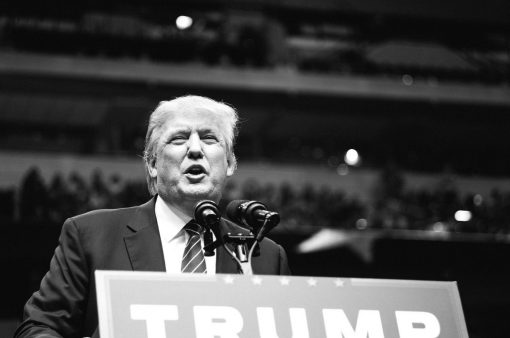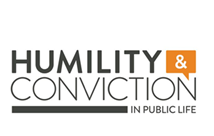TRUST and Trump: investigating sincerity and accuracy in discourse
9 April 2018
When exploring discursive untruthfulness, modern American politics is an obvious example. Donald Trump’s presidency has been continuously criticised for his use of falsity, with the aim of promoting his own biased views. However, untruthfulness is irrefutably underpinned by the notion of ‘lying’, an act that is near impossible to identify: in order to lie, the person must know that what they are saying is insincere. The difficulty with this stems from our inability to know whether someone believes what they are claiming. How can you prove that the individual understands that they are being untruthful? They may instead have a strong belief in their ignorant opinion, which blinds them to the evident truth of the situation. But should ignorance excuse false claims? Or do we place too much value on the notion of a ‘lie’?
In the summer of 2017, I took part in testing the untruthfulness framework described by Christopher Heffer in his forthcoming book Lying and Bullshit in Language and Life: The TRUST Untruthfulness Framework. The ‘TRUST’ (Trust-Related Untruthfulness in Strategic Text) framework aims to provide a theoretical understanding of discursive untruthfulness. The TESSAT steps involve following a systematic process: selecting Text, finding Evidence of a lack of truthfulness, assessing justifiable Suspensions of truth, analysing Sincerity and Accuracy, and finally investigating the breach of Trust. Through doing so, the framework aims to provide an analysis of untruthfulness, which may encourage accountability of those making false claims or failing to investigate the truth.
The framework suggests that perhaps someone may still be held accountable, despite it being unprovable that they have told a blatant lie. The heuristic excels when analysing the assertions of Donald Trump, for instance during a recent televised meeting with lawmakers in February 2018. The trauma caused by the slack gun laws in America, and Trump’s response to calls to tighten them, shows the need to hold politicians accountable for more than blatant insincerity. Referring to the 2017 Pulse nightclub shooting, Trump asserted:
‘You take Pulse nightclub, if you had one person in that room that could carry a gun and knew how to use it, it wouldn’t have happened, or certainly to the extent that it did.’
Trump’s delusional claim ignores the fact that an off-duty officer was present that night, and exchanged gunfire with the attackers. This did nothing to reduce the horrific death count of 49 innocent people; Trump was undeniably abusing his influential role as president to spout false information.
But was he lying? It could be possible that Trump, with his internal biases and positive opinion of gun use in America, believed that gun ownership could have stopped the tragedy. He also may not have been aware of the presence of Officer Adam Gruler in Pulse that night. Although it is that unlikely he did not have this knowledge, does this possibility excuse his falsity? The TESSAT heuristic helps us to hold public figures such as Trump accountable for these careless statements, despite being unable to prove the presence of a lie. The president, as someone with a vast amount of power and responsibility within America, should have investigated the facts behind his brash claim. When questioning the breach of trust, the inaccuracy becomes even more harmful. Trump’s Republican audience may be considered vulnerable since they also most likely hold the same biases as him. Gun laws are a matters of serious debate in America, with a vast number of citizens holding the opinion that they are a vital part of their culture. Through this, Trump’s untruthful statements could be taken as fact, despite being utterly false.
The TESSAT step analysing the breach of Trust highlights another important aspect of the TRUST framework: how someone’s power (or lack of) affects the severity of the untruthfulness. During my time working on TRUST, I drew on a real-life example when considering this, involving a family friend with the disconcerting opinion that veganism is ‘only an excuse for anorexia’. This is evidently a biased and inaccurate personal opinion, coming from someone who has not studied the motives for veganism. However, is she truly breaching the trust of her audience in a refutable way? I could identify immediately that this was purely an opinion, and I would not consider myself a vulnerable listener. It is unlikely that the individual had harmful motives, and she does not hold a position of power. This causes the breach to be far less severe than within a political or media context. Hence, not only does the framework emphasise the accountability attached to being insincere or recklessly inaccurate, but it also considers the context surrounding the assertion. As a person in a position of power, with most likely reproachable motives and a vulnerable audience, Trump is a prime example of an individual harmfully abusing the truth.
Despite the unlikelihood that the TRUST framework can be used as an objective measure of untruthfulness, it is extremely worthwhile to explore beyond ‘lying’ as an indicator of accountability. It has the potential of being influential to those outside academia since the framework is easy to use and encourages a systematic way of revealing untruthfulness. Fake news and filter bubbles constantly surround us, and make it difficult to decipher what is fact and what is untruthful discourse. Perhaps implementing frameworks such as TRUST may help us work toward understanding the role of reckless inaccuracy, and end the reliance on the lie.
Image source: Jamelle Bouie, Flickr (CC BY 2.0)
Comments
3 comments
Comments are closed.
- October 2025
- September 2025
- August 2025
- July 2025
- June 2025
- May 2025
- April 2025
- March 2025
- February 2025
- January 2025
- December 2024
- November 2024
- October 2024
- September 2024
- August 2024
- July 2024
- June 2024
- May 2024
- April 2024
- March 2024
- February 2024
- January 2024
- December 2023
- November 2023
- October 2023
- September 2023
- August 2023
- July 2023
- June 2023
- May 2023
- April 2023
- March 2023
- February 2023
- January 2023
- December 2022
- November 2022
- October 2022
- September 2022
- August 2022
- July 2022
- June 2022
- May 2022
- April 2022
- March 2022
- February 2022
- January 2022
- December 2021
- November 2021
- October 2021
- September 2021
- August 2021
- July 2021
- June 2021
- May 2021
- April 2021
- March 2021
- February 2021
- January 2021
- December 2020
- November 2020
- October 2020
- September 2020
- August 2020
- July 2020
- June 2020
- May 2020
- April 2020
- March 2020
- February 2020
- January 2020
- December 2019
- November 2019
- October 2019
- September 2019
- August 2019
- July 2019
- June 2019
- May 2019
- April 2019
- March 2019
- February 2019
- January 2019
- December 2018
- November 2018
- October 2018
- September 2018
- August 2018
- July 2018
- June 2018
- May 2018
- April 2018
- March 2018
- February 2018
- January 2018
- December 2017
- November 2017
- October 2017
- September 2017
- August 2017
- July 2017
- June 2017
- May 2017


Hello Daisy. I am a student of Malawian origin currently pursuing my PhD studies in China. I am currently working on a project related to trust and lying using Heffer’s framework, but I cannot find the framework in full. All I find are mere bits of the same. Can you kindly share the framework if you have so that I can go through it comprehensively? . My email address is welkondowe@gmail.com. Thank you in advance.
The problem with people like Trump is that they believe their own lies(real or white). They repeat them so often that it becomes second and third nature to them. People like that would probably pass or almost pass a polygraph test or any other lie or psychological test as they sometimes actually think they are “telling the truth.” Fake news is a shame for both journalists as well as politicians who encourage it.
Well that special counsel report was a bit of a farce. Allowed him to spin more white lies. What’s the A.G. doing being partial instead of impartial in his legal reporting to the Senate.